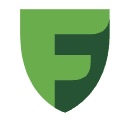From Working in Afghanistan to a $6M Startup: The Story of a Woman Entrepreneur from Bishkek

Dina Ruslan never planned to connect her life with technology, but she eventually found herself in IT. She graduated from the International University of Kyrgyzstan with a major in Programming and Analytics, and then spent a year working in Afghanistan to save money for studying abroad. She later entered the master’s program at Lincoln University in California and began building her career in the United States. However, after several years, she decided to give it all up and return to her hometown. In 2020, Dina founded the startup Codify, an IT school for kids and teens. Two years later, the company was valued at $6 million.
For the joint project by Digital Business and Astana Hub, 100 Startup Stories of Central Asia, Dina shared what she was doing in Afghanistan, what challenged her most in the US, and how a childhood experience taught her not to fear risk. She also spoke about her most expensive failures and why Codify stands out from other IT schools.
«I didn’t want to stand under the sun at the bazaar all day»
– Dina, in your interviews, you mentioned that you ended up in IT by chance. How did that happen?
– Initially, I wanted to become a designer, but my parents wanted me to pursue a career in medicine. After 9th grade, I missed the application deadline, but I managed to enroll in the Polytechnic College in Bishkek, specializing in IT.
It was really a random choice — I knew very little about technology. But recently, I realized that my drive to explore the unknown goes back to childhood. I lived with my grandmother in an aul, and we had two hectares of farmland. When I was in 3rd or 4th grade, I used to help pick strawberries at dawn, and by 7 or 8 in the morning, I would be selling them at the market. At the time, it felt shameful to be at the bazaar, especially when my classmates were outside playing. Over time, that feeling evolved into a desire to be more inventive and to never again work under the sun in the fields or stand behind a market stall.
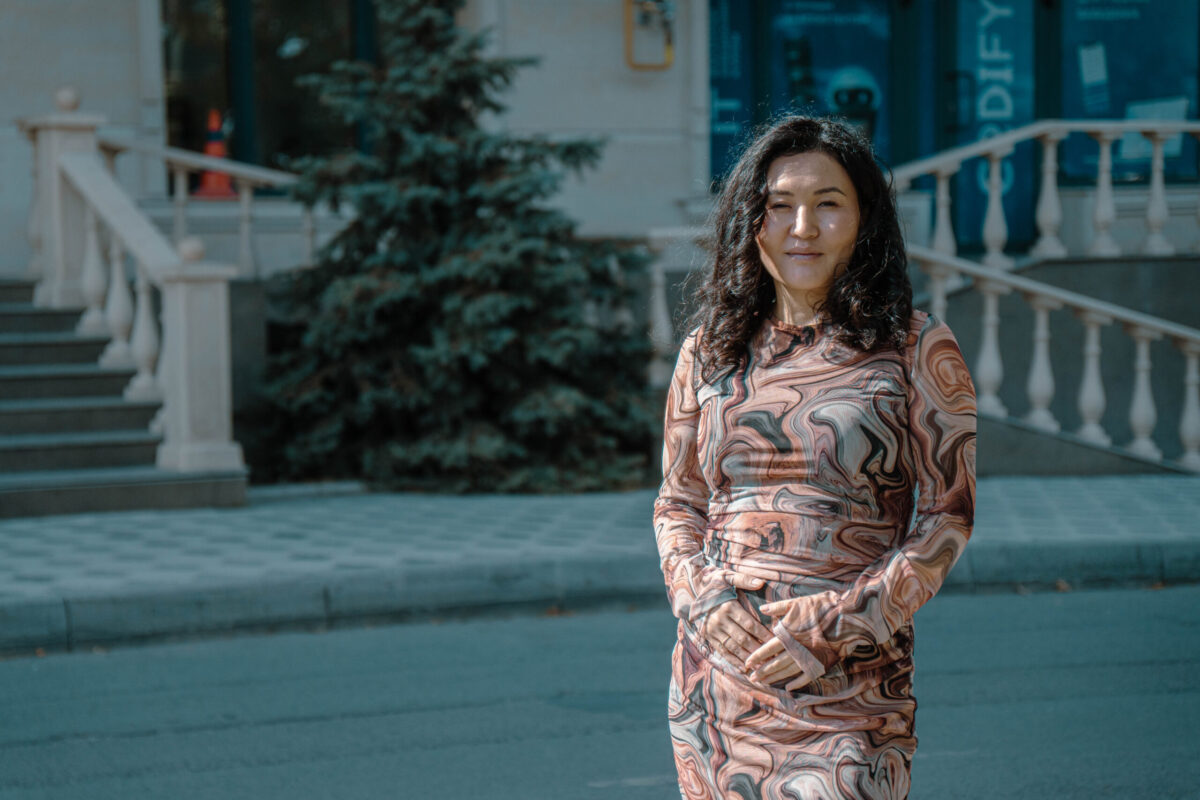
In general, I love my profession. At the same time, I enjoy designing products, thinking through features, and analyzing the market more than being a startup founder or businesswoman. I never aimed to become an entrepreneur, but I’ve gotten used to it, mostly because we have a truly great team.
– Going back to your biography, what were your next steps after college?
– In 2011, I graduated with honors from the bachelor’s program at the International University of Kyrgyzstan as an external student, majoring in Programming and Analytics. At that time, there were almost no IT job openings, so I prepared a CV and started sending it to various companies. As a result, I was hired by an international furniture company as a corporate client manager. After three months, I realized it wasn’t the right fit for me despite the good salary.
I had always wanted to continue my education abroad, but I didn’t have the money for it. So I started thinking about how I could save up. My brother was working at a NATO base in Afghanistan, and he suggested I apply for a position at the Army & Air Force Exchange Service — a company that supplies military personnel with clothing, food, medicine, and other essential goods. They needed employees who spoke English, so I got a one-year contract.
– In what ways did this experience shape your future?
– It was quite challenging to spend a year in a restricted area, away from the usual ecosystem of family, friends, and university. The only things you can really do there are work and read. But during that time, I was able to seriously think about what I wanted to do and I managed to save $12,000.
«I felt completely alone against the world»
– So, what happened after you got back to Bishkek?
– I enrolled in the master’s program at London University with a 75% scholarship. But even with the discount, it was still very expensive. So I became a student at Lincoln University in California, majoring in Management Information Systems.
I took several courses in my first semester and started working two jobs to support myself.
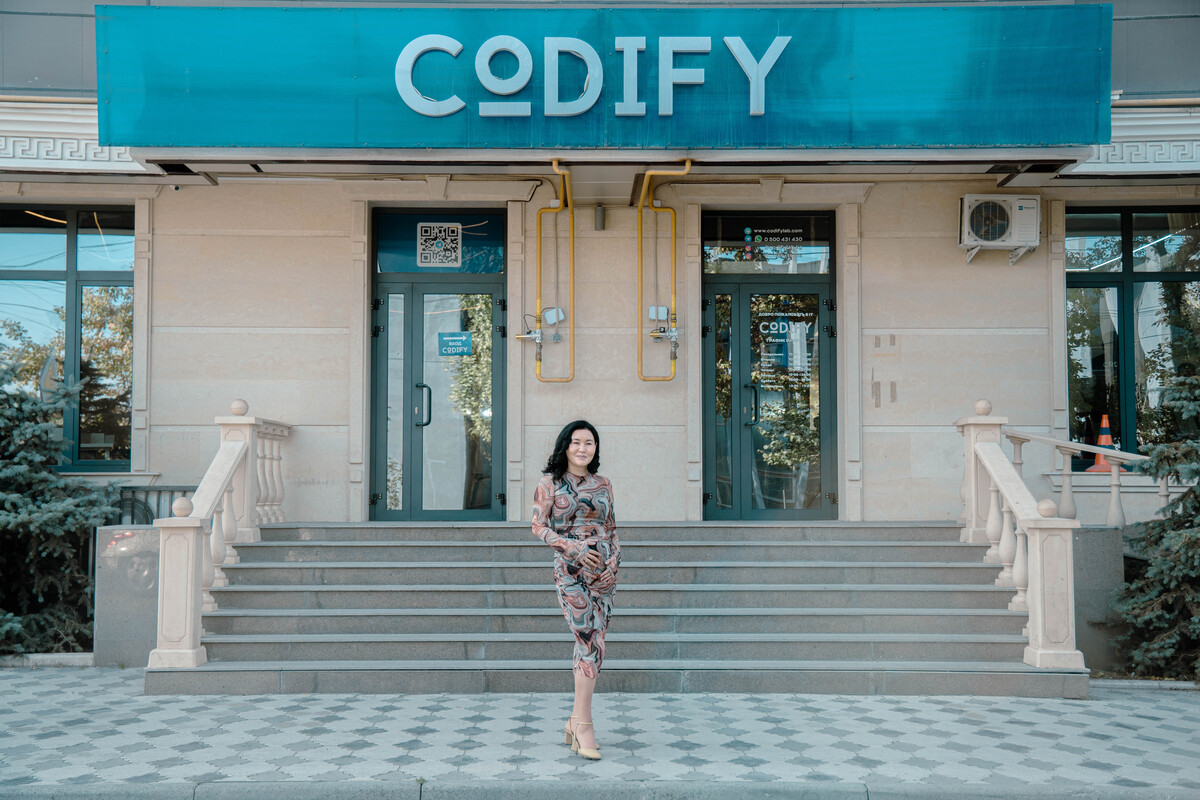
– How did your career go while you were in the USA?
– At first, like many students, I worked as a cashier and waitress. But in my second year of studies, I decided to look for a job in IT. For six months, I went to interviews, but I was always rejected. I spent almost all my savings, but then, unexpectedly, I got hired as a systems analyst at the financial company Wells Fargo in Iowa. After two years, I went back to Bishkek for the summer. I had planned to spend just a vacation there, but I ended up staying for good.
I was offered a position as a project manager at the IT development company ZenZoft. Despite the salary being several times lower than what I earned in the USA, I accepted the offer. The project was still in its early stages, and I was drawn to the idea of building something almost from scratch.
– Was it a tough decision to make?
– Living in the USA was much harder. I felt alone against the world. I realized that I was almost unprotected, and many benefits weren’t available to me as an immigrant. I was able to handle those challenges at the time, but I don’t think I could go through it a second time.
I think it was the right time to leave. At 26 or 27, it’s much easier to start over than at 35. Last year, I went back to California and met up with friends who had stayed there. Now, many of them would like to return to their home countries, but they no longer have any social connections there. So for them, the idea of coming back and starting over is much more frightening.
«I was completely burned out from pushing out products and not getting any feedback»
– So, when did Codify happen?
– It also happened by chance. It was 2019. While still working at ZenSoft, I started teaching IT management at one of the universities in Bishkek. I shared this on social media, and several people messaged me on Facebook asking if I could teach them as well. So I created a separate group and registered a legal entity. Gradually, the project evolved into a full-fledged IT school for kids and teens.

– How did things grow from there?
– The number of students and teachers gradually increased. To automate our processes, we developed Codify LMS — a system for managing the educational process in learning centers. It’s now used by language courses, online schools, and lyceums as well.
Another area of our work became outsourced IT product development. We had clients from all over the world, but in 2023, I decided to shut down that direction and also stopped looking for new clients for Codify LMS. Instead, I chose to focus entirely on the IT school.
– What made you decide to do that?
– I was completely burned out from pushing out products and not getting any feedback. In outsourcing, you’re not responsible for promoting the project. You don’t see the real users, and sometimes you don’t even know what happens to your product in the end.
In addition, in 2023 I participated in the Silkway Accelerator by Astana Hub and Google for Startups. During the program, I realized I was spreading myself too thin. There were too many directions, a team of over 40 people, and a huge number of tasks, yet our maximum MRR never exceeded $100,000. The project was self-sustaining, but for the amount of resources we were spending, that figure was far too low.

At the same time, I met the team behind the Kazakhstani startup Qalan. I was impressed by the excellent platform they had built for teaching math. Moreover, their revenue significantly exceeded Codify’s, largely because they were focused on a single product.
I was inspired by the success of the Qalan team, so I reorganized the company and decided to focus on a single direction — the IT school for kids and teens.
– Did that change have an impact on your revenue?
– In August–September this year, we reached an MRR of $150,000, even as our headcount decreased.
Currently, we have six departments within the company, with around 30 people working across sales, marketing, development, finance, customer care, and our training center.
«I was on the verge of losing the Codify brand»
– What other challenges did you face along the way?
– There were so many screw-ups, you could make a whole list. I’ll share the most expensive one. In 2020, right before the coronavirus pandemic, I rented an office. Soon after, everyone went into quarantine, and I ended up spending a lot of money to maintain an empty space, hoping things would return to normal.
In 2021, we fully embraced the startup mindset. We raised $100,000 in investment from Antler and set out to scale Codify across the entire ATR region. But later, when I learned that other startups were investing over $1 million into that market and relocating their teams there, I realized we had made a big mistake. We spent a lot of money in vain.
A year later, some potential partners convinced us to open an office in Tashkent. I spent about a year and over $50,000 on the effort. In the end, I nearly lost the brand — the co-founders bought the domain codify.uz and were planning to run the educational program independently. We managed to part ways on good terms, but after that, I patented Codify in Central Asia, Singapore, Mongolia, and Russia. I also learned an important lesson: you can’t blindly trust people, no matter how appealing their promises of cooperation may sound.
And the cherry on top was developing expensive products like a hiring service, news platforms, games, and more. I had spread myself across multiple directions and allowed the team to launch all kinds of different projects. Altogether, it cost us around $500,000 with no return.
– Why do you think those projects didn’t work out?
– The main mistake was that we built the service first and only afterward started thinking about who would actually use it. As a result, we now have a kind of cemetery of unused Codify IT products.
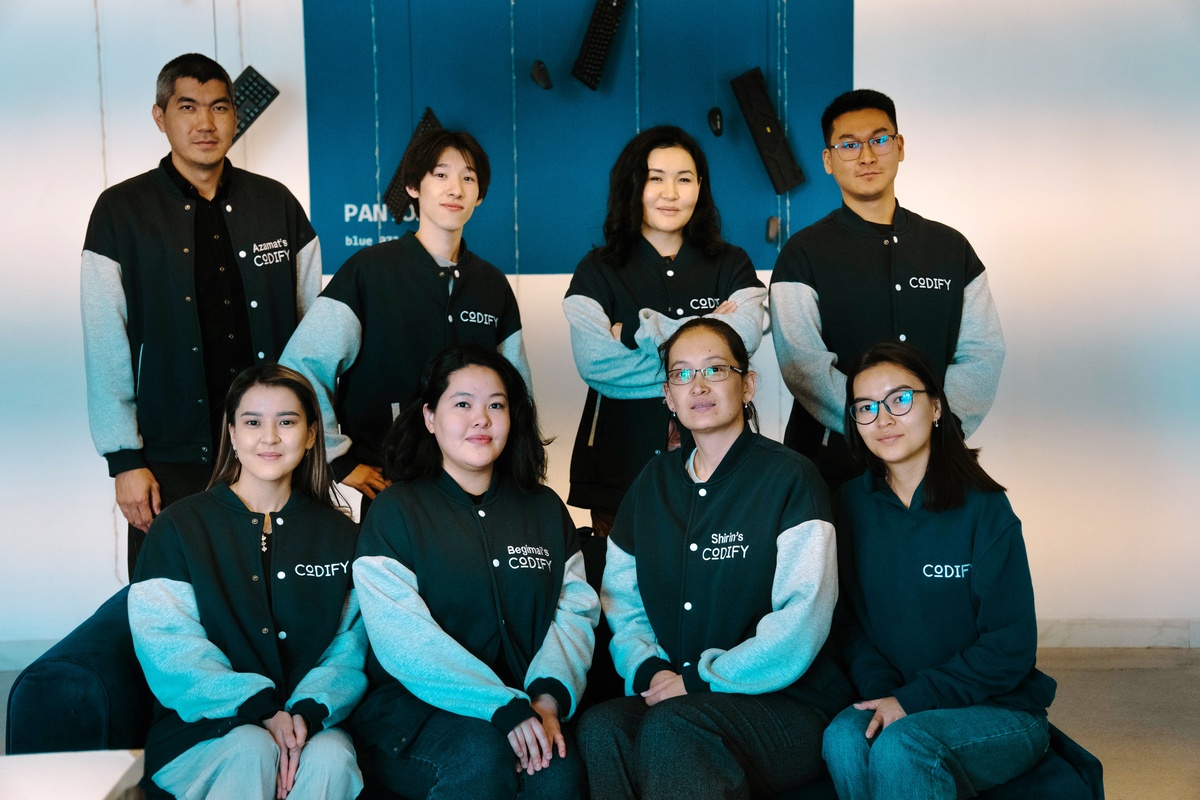
– How did you finance these product experiments?
– At the very beginning, I invested $5,000 of my personal savings into the project. Coming from a corporate background, I knew that the first priorities were salaries and taxes. I taught my team that we should only use the money we earn to fund experiments. From that point on, we consistently reinvested revenue back into the product — and throughout the entire journey, we never took a single dollar out of the company.
We also attracted investment. In 2021, we became winners of the Accelerate Prosperity accelerator in Kyrgyzstan and received our first $40,000 at a $1 million valuation. Then, during our participation in Antler, we raised another $100,000. In 2022, we closed a funding round of $400,000. By that time, our valuation had increased to $6 million.
Looking back, I realize that after receiving funding, I started to overhype the startup. That was exactly the time when we hired motion designers, videographers, recruiters, and other unnecessary full-time specialists. To avoid repeating those mistakes, I now turn down investments and avoid spreading the business too thin. I don’t see much value in opening a funding round just for the sake of a flashy press release only to then figure out how to spend the money and which product to develop further.
– Even with all the difficulties, you became self-funded. How did you pull that off?
– Earlier, when we reached $50,000 in revenue, we considered it a success because our burn rate (the average amount the company lost each month — note by Digital Business) was about the same. But everything left after covering mandatory expenses was reinvested. So, formally, we were in the black, but in reality, we were just breaking even. Around 2022–2023, we finally started to see a stable, though modest, positive balance.
«There’s no equivalent to our educational program in the region»
– How many students does Codify have right now?
– We currently have around 1,000 children enrolled, aged 7 to 17. But it’s just the beginning of the school year, so we expect more newcomers to join. While we used to focus mainly on the number of users, we now pay much more attention to LTV (the lifetime value of each client — note by Digital Business). It’s important to us that people don’t just come once, but actually become engaged and want to continue learning with us.
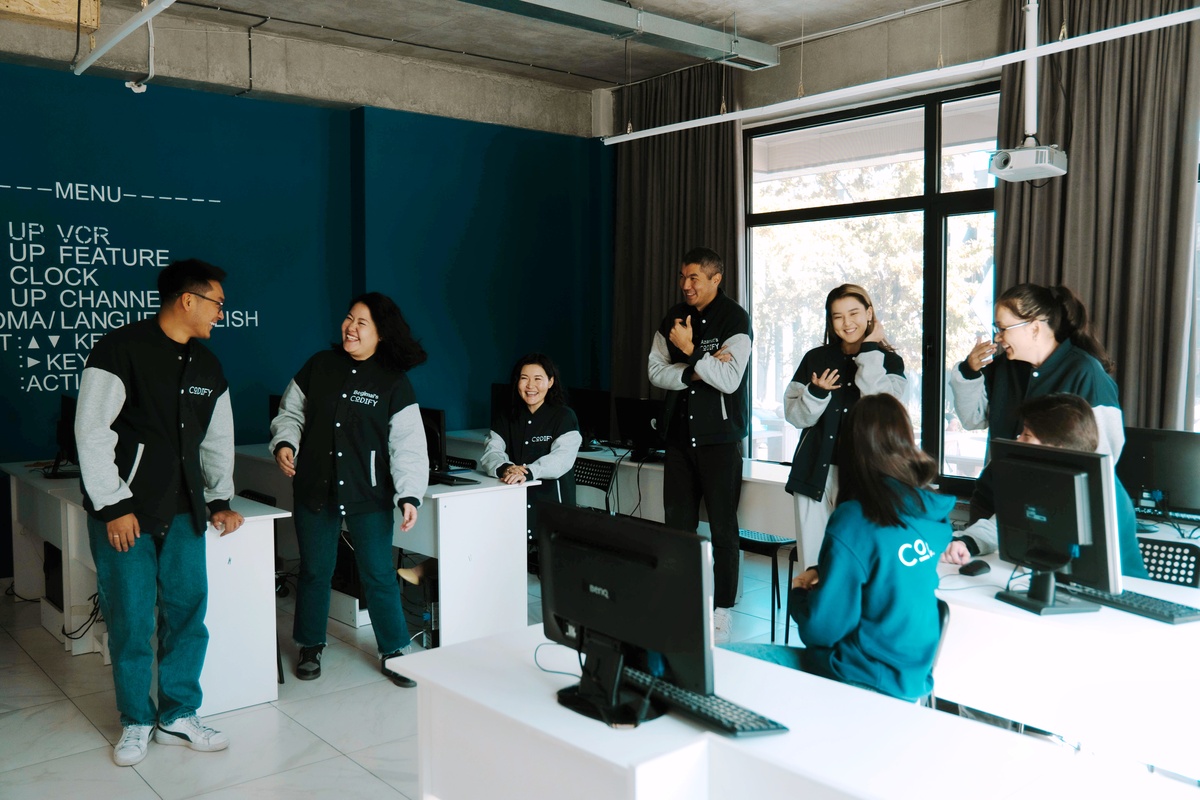
– What is the cost of the courses?
– We offer a 5-step program, with each stage lasting 4 months and costing approximately 48,000 soms (around 296,000 tenge).
–What makes Codify different from other online schools?
– We’ve implemented Project-Based Learning — a modern educational methodology centered around real-world projects. It was originally developed in the 19th century and is now used by top universities like Harvard, MIT, and others.
The second methodology we use is the Confidence/Competence Loop. Its core idea is that confidence comes from competence. To believe in yourself, it’s not enough to just listen to motivational talks — you need real skills. That’s why we teach through mini tasks: building a website, creating a Telegram bot, designing a logo, working with cybersecurity, and more. Each time a student successfully completes a task, their confidence grows and their motivation strengthens.
Both concepts were adapted for children in collaboration with education methodologists. That’s how our original educational program was created — a program with no equivalent in the region. Our students spend just 4–5 hours per week with us, but during that time, they gain more practical knowledge than they would from 20 hours of theory at school.
«I recommend not staying in «startup mode» for too long»
– What are you planning for the project in the coming year?
– We aim to reach an MRR of $200,000 and maintain it. According to our calculations, this is achievable even while operating in Bishkek. After that, we plan to scale to Almaty, as I really like both the city and its market.
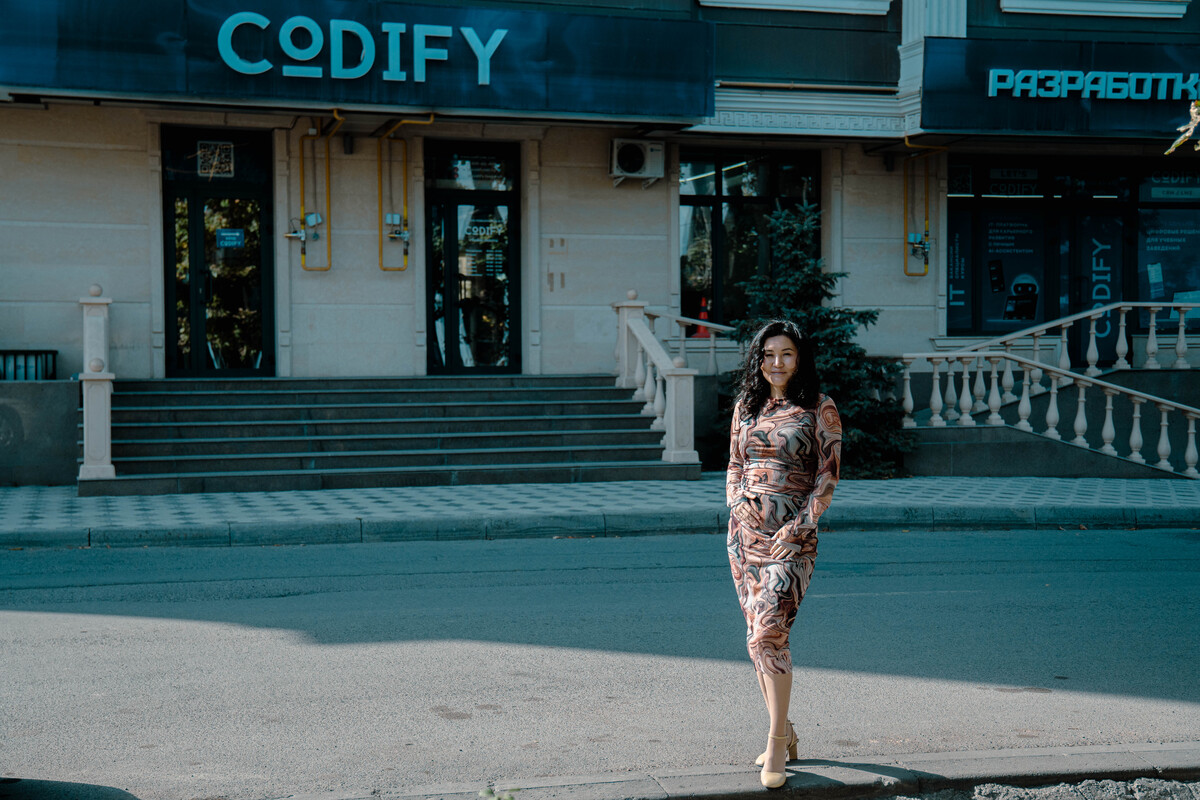
– What’s your key advice for early-stage startup founders?
– Solve a real problem. Many founders start by developing a product first, and only afterward rush to find clients who might use it. Based on my experience with Codify, that approach usually leads nowhere.
Don’t chase trends. Today, I see many projects using OpenAI and other AI systems as their foundation, positioning themselves as startups. Many of them win accelerators and attract investment, but in reality, they don’t have a live product. They have few real clients and don’t solve real problems. On top of that, they’re heavily dependent on OpenAI, which could enter their niche at any time.
For example, last year I attended the TechCrunch Disrupt conference. I walked through the entire venue filled with AI companies and couldn’t find a single project with its own proprietary AI engine. Everyone was using OpenAI solutions or other technologies from big tech companies. I get that it sounds cool to call yourself an AI startup, but any release from a major player could instantly kill that kind of business.
I also recommend not playing the startup game for too long. In the early stages, it’s really valuable to take part in accelerators — to build your name, get advice from mentors, and find your first clients. But after that, you need to focus on building a real business, not jumping from one program to another. I know many projects that win awards year after year and regularly compete in pitch battles, but their turnover still doesn’t exceed $1,000 to $5,000.
Another piece of advice from my experience: don’t get caught up in the euphoria of early success. After we reached $50,000 in turnover, I started getting invited to podcasts, conferences, and interviews to share my story. Bit by bit, my focus shifted. Instead of being a CEO working on the product, I was becoming a media face, busy building my personal brand. At some point, it hit me: while I was out there speaking at events, competitors were already moving into our niche.
So I believe you need to build a solid marketing system and not rely too much on your personal brand. Speaking in front of a hundred people might bring you a couple of clients at best, but it’s not something you can count on consistently.
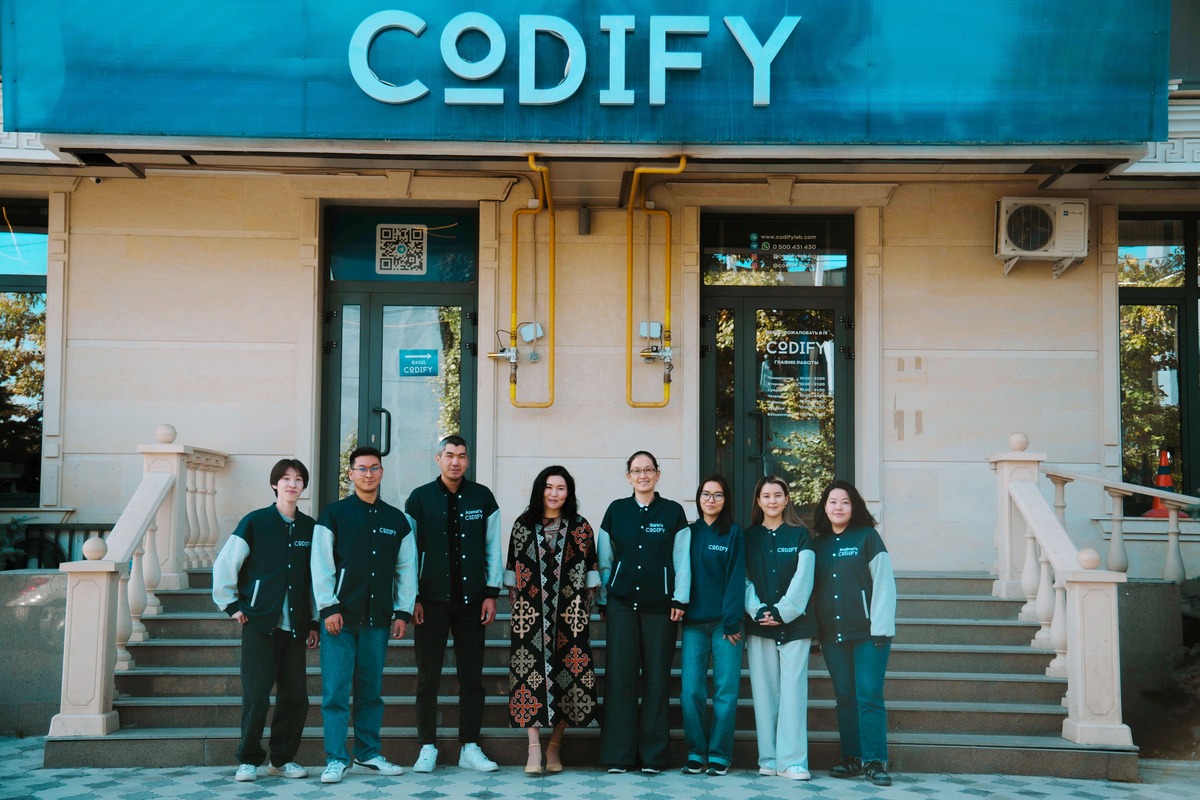
And of course get legal. As soon as you see that you have product–market fit, your first clients, and a clear idea of how to scale, register the company and start paying taxes. In the beginning, it’s enough to at least hire an outsourced accountant. It’ll save you from a lot of potential problems and awkward questions later when the business starts to grow. We made plenty of mistakes ourselves. Once we trusted the wrong accountant and ended up losing our entire 1C database. We’re still dealing with the consequences.
I once heard the phrase, «Hire slow, fire fast». If you ever find yourself thinking about letting someone on the team go — don’t wait. Chances are, you’ll end up parting ways anyway, but in the meantime, you’ll just waste time and energy dragging it out.
And finally. A lot of people think a startup is always something small, unstable, and constantly chasing funding. But in reality, a startup is about innovation, challenge, and growth. It can be a stable business that delivers real value to people, implements new ideas, and scales quickly.
